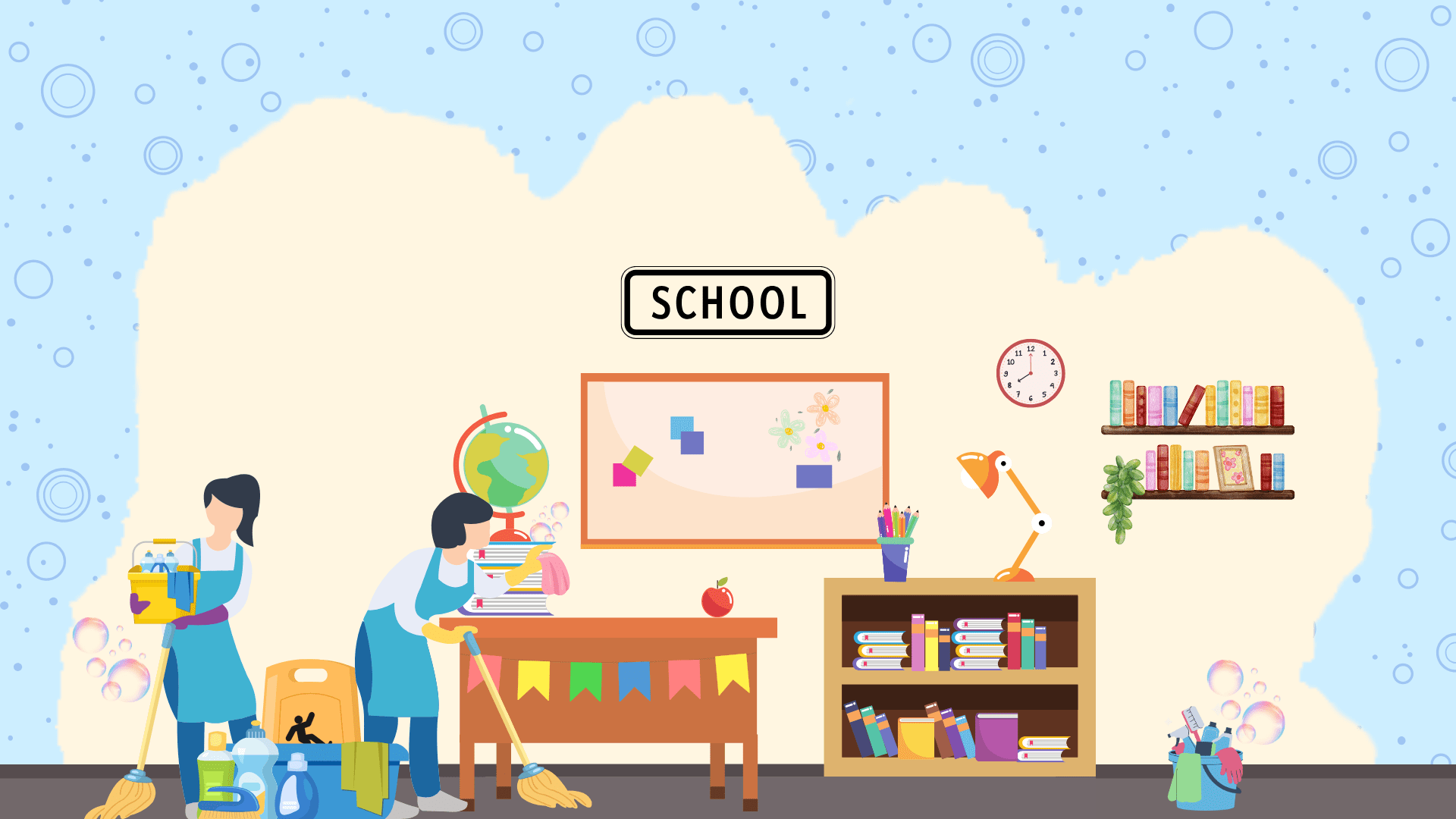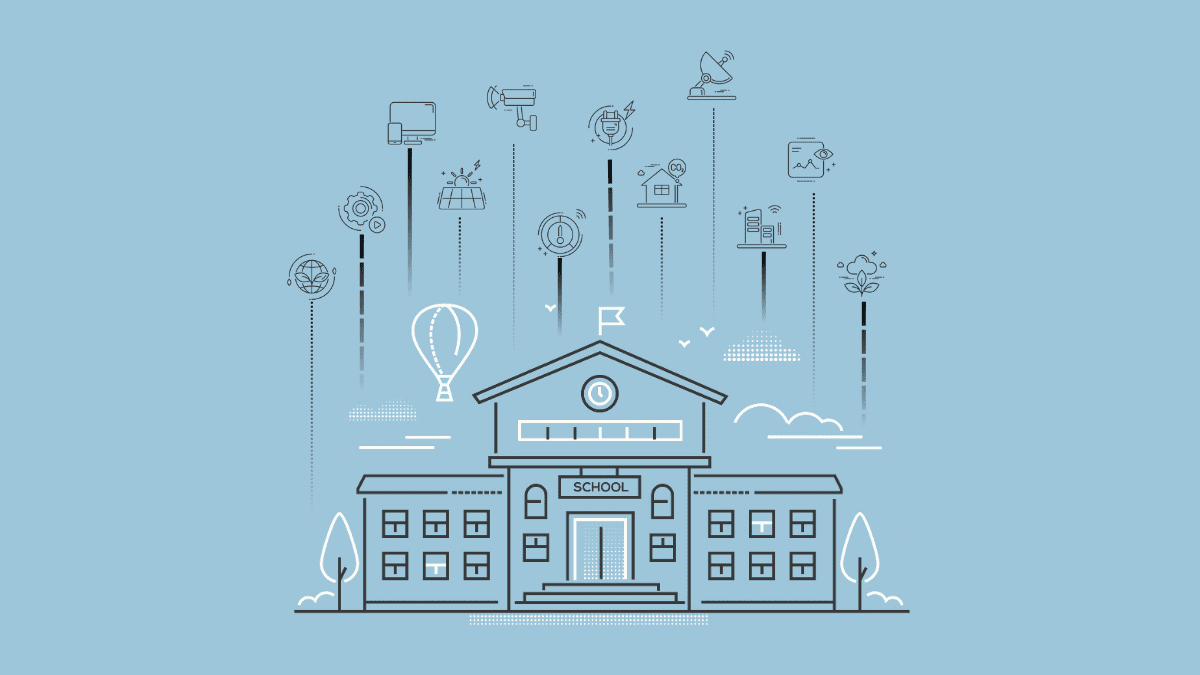17 Oct 2025 | Industry Insights
Designing Sensory-Aware Cleaning Schedules for SEN Students

How Digital Twins Can Support Inclusive Environments in Education Settings
In education, every child deserves a safe, welcoming space to learn. But for students with Special Educational Needs (SEN), particularly those with sensory processing differences, the physical environment can be as much a challenge as the curriculum. This makes something as seemingly routine as cleaning schedules crucial. The timing, methods and materials used in cleaning can have a significant sensory impact. Harsh chemical smells, vacuum noise, or unexpected changes in room setup can cause distress, anxiety, or sensory overload for some students, especially those with autism, ADHD or sensory integration disorders.
The Sensory Challenge: More Than Just Cleanliness
For many neurodivergent students, certain sensory inputs such as smells, sounds, lights and textures can be overwhelming. In a typical cleaning schedule, this impact is often overlooked. The use of strong-smelling disinfectants in occupied spaces, loud equipment like hoovers or floor buffers during class transitions and even changes in room layout after desks or chairs are moved can all create discomfort. While these practices may be harmless to most, they can disrupt concentration, trigger emotional responses, or cause students to avoid certain areas altogether, turning a well-maintained space into one that feels unpredictable or unsafe.
Schools that take a sensory-aware approach often begin by looking closely at how their environments affect wellbeing. Small details such as lighting, noise levels, smells and even the textures of surfaces can influence how safe or overwhelming a space feels. Regular audits of classrooms, corridors and communal areas can highlight hidden sensory triggers, which in turn should inform how and when cleaning takes place. For example, identifying that a particular corridor echoes loudly or that a certain classroom is especially sensitive to smell can guide decisions about cleaning products or timing.
What’s Needed: Predictable, Sensory-Aware Schedules
A truly inclusive school environment doesn’t just accommodate learning differences; it respects sensory boundaries. This begins with designing cleaning schedules that consider who will be in a space, when they will be there and how cleaning activities might affect them.
For example, using unscented or low-odour products in sensory-sensitive areas can significantly reduce discomfort. Loud equipment should be scheduled for use outside of lesson transitions or break times to avoid unnecessary disruption. Consistency in room layouts post-clean is also crucial, helping students return to familiar environments without surprise. Just as importantly, communicating cleaning activities in advance to teaching and support staff allows them to prepare students or adjust routines accordingly.
This needs to be part of a whole-school culture. Sensory wellbeing isn’t supported by isolated tools or one-off strategies, but by embedding predictable and respectful routines across all aspects of school life. Cleaning staff, like teachers and support assistants, benefit from understanding how sensory input affects students and why adjustments matter. When everyone is included in this shared approach, operational tasks like cleaning become part of a broader system of care.
Where Digital Twins Fit In
This is where a platform like Twinview can play a pivotal role. By integrating data on occupancy patterns, environmental conditions and space usage into a single, real-time platform, facilities teams gain the tools to create cleaning schedules that are not just efficient, but sensory-aware.
Digital twins can help identify high-sensitivity zones and align cleaning practices to minimise disruption. They also support a cycle of continuous improvement by monitoring conditions like air quality and noise levels before and after cleaning. This data-driven approach ensures that small adjustments are sustained and refined over time. Automated reminders, signage and scheduling features further support consistency and communication among staff.
Real Impact: Small Changes, Big Difference
The adjustments involved in sensory-aware cleaning may seem small, but their impact can be profound. Schools that adopt this approach often see a reduction in incidents of sensory distress, alongside noticeable improvements in student engagement and comfort. Support staff report smoother routines, while parents and carers express increased confidence in the learning environment.
Making cleaning part of a whole-school sensory approach also avoids tokenistic or piecemeal practices. It ensures that sensory wellbeing is addressed in every aspect of school life, from curriculum and classroom setup to operational routines like cleaning.
Building More Inclusive Spaces, One Schedule at a Time
Facilities management has long played a silent but critical role in school life. When viewed through the lens of inclusion, even routine activities like cleaning become opportunities to support student wellbeing. By combining design empathy with digital intelligence, schools can turn cleaning into a practice that creates spaces which are not only clean and compliant, but calm, predictable and inclusive for every learner.
Digital twins like Twinview give schools the tools to make inclusion visible, measurable and sustainable. By turning everyday maintenance data into actionable insight, education leaders can ensure their facilities are clean, efficient and genuinely welcoming for all.

Industry Insights
Building Tomorrow's Classrooms Today: How Digital Twins Are Reshaping Education
In the ever-evolving landscape of education, technological advancements continue to play a pivotal role in shaping the future of learning. Among these innovations, Digital Twins emerge as a powerful tool with transformative potential, find out how Digital Twins are now revolutionising the education sector.
Read more

eBooks
The Strategic Value of Digital Twins for Schools
As digital twin technology continues to advance, it presents a powerful tool for schools to optimise their operations and improve learning environments. This white paper provides a detailed overview of the strategic benefits of digital twins for schools. It is specifically aimed at leadership teams in schools and academy trusts, facilities managers, and government bodies such as the Department for Education. It explains how digital twins can improve facility management, tailor learning experiences, strengthen emergency preparedness, and promote energy efficiency in alignment with the UK’s educational and sustainability objectives.
Read more

Case Studies
Advancing Education Infrastructure: Twinview’s Digital Twin at Zayed University
The Zayed University Proof of Concept (POC) project in Abu Dhabi represents a significant leap forward in campus operations, sustainability and digital transformation. Powered by Twinview’s digital twin technology, the initiative turns complex building systems into intelligent, high-performing environments. Through Twinview, Zayed University unifies fragmented systems into a single, connected digital ecosystem. Real-time telemetry from IoT sensors and the Building Management System (BMS), asset tagging and smart dashboards provide complete operational visibility and control. The result is a sustainable, adaptive infrastructure that enhances energy efficiency, ESG performance and overall building reliability.
Read more
Book your one-on-one appointment with one of our specialists.
info@twinview.com
+44 (0)844 800 6660
London
24 Greville Street
Farringdon
London
EC1n 8SS
Newcastle
Spaceworks
Benton Park Road
Newcastle upon Tyne
NE7 7LX

